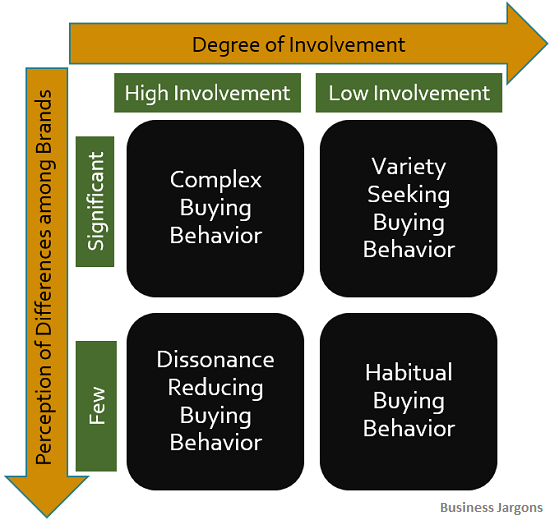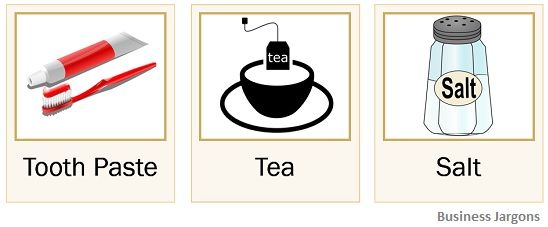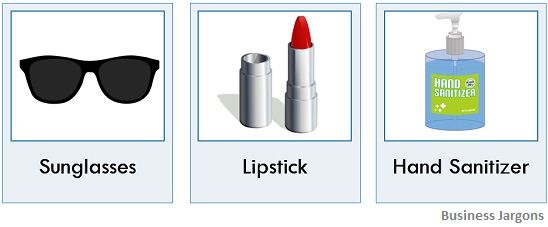Definition: Consumer Behaviour is the sum total of the decision taken by the consumers concerning the search, selection, purchase, usage, evaluation and disposal of the product and service, which are expected to satisfy their needs.
In simple words, consumer behaviour can be defined as the conduct of the individual directly concerned with making decisions as to the investing the time, money and energy to acquire and use goods and services of their choice and need.
Consumer Behaviour studies the various basis, i.e. personal, psychological, situational, social, etc. to determine for what reasons consumers purchases, consumes and disposes of the products and services. It determines the way in which consumer’s emotions, attitudes and preferences affect the buying behaviour.
Types of Consumer Buying Behaviour
Consumer Buying Behaviour is mainly determined by the kind of product which the consumer needs to buy. Hence, in case of different products the buying behaviour would be different, i.e. the consumer behaviour at the time of buying milk, would not be the same at the time of buying a laptop.
So, from where does this difference comes into the picture? It arises on the basis of product use, quality, features, purchase frequency and most importantly ‘price’. It has been analysed over the years that consumers are highly involved while spending money on expensive items, whereas when the product is not much expensive and bought recurrently, the involvement of the consumer is less.
Consumer Behaviour is divided into four broad categories based on two dimensions:
Complex Buying Behaviour
Such behaviour is applied in case of the product which is expensive, seldom purchased, self-expressive, high in risk and one-time investment.
The buyer has not much knowledge about the product and so they are highly involved in the purchase and carry out some research to collect information about the product from various sources such as company website or sales representative, as well as takes advice from his friends, experts and acquaintances, to make the right decision.
So, the consumer takes a long time to evaluate the alternatives, and develop a belief and attitude about the product and then make the final decision for buying and investing the sum.
Dissonance Reducing Buyer Behaviour
When the product is expensive, less-frequently purchased and high in risk, dissonance, i.e. Dissatisfaction may take place when the consumer is concerned that he/she might regret the decision when the consumer finds out that the same product offered by other brands is better in terms of quality and durability.
Therefore, such behaviour is mainly concerned with reducing post-purchase dissonance, because of the dissatisfaction caused due to previous purchase.
That is why the customer is highly involved in the purchase but finds it difficult to identify the differences between the product offered by various brands, as well as there is limited choice, which also affects decision making. So, he collects information from different sources and compares and evaluates the alternatives, before making the final purchase which takes time.
Further, on the basis of price, specifications, availability and convenience, the product is selected.
Habitual Buying Behaviour
This behaviour is applied when the product is economical and bought frequently, but the consumer has less involvement, as to which brand of the product he/she is buying. So, there is not much consideration involved before taking the buying decision, as it is purely based on brand familiarity and availability.
People buy such items out of habit or familiarity with the taste, and not due to strong brand loyalty.
Variety Seeking Buying Behaviour
When the buyer switches between brands not because of the dissatisfaction with the previous purchase but out of variation, i.e. they want to try something new and avoid the boredom.
In such a case buyer has certain beliefs about the product and after a little evaluation makes the purchase and develops an opinion about the product at the time of consumption.
Therefore, Consumer Behaviour has a wider scope which not just considers the actual buyer of the product and the act of buying but also takes into account the different roles played by various individuals i.e. initiator, influencer, decide, buyer and user, along with the influence they make on a decision relating to the final purchase.






Leave a Reply